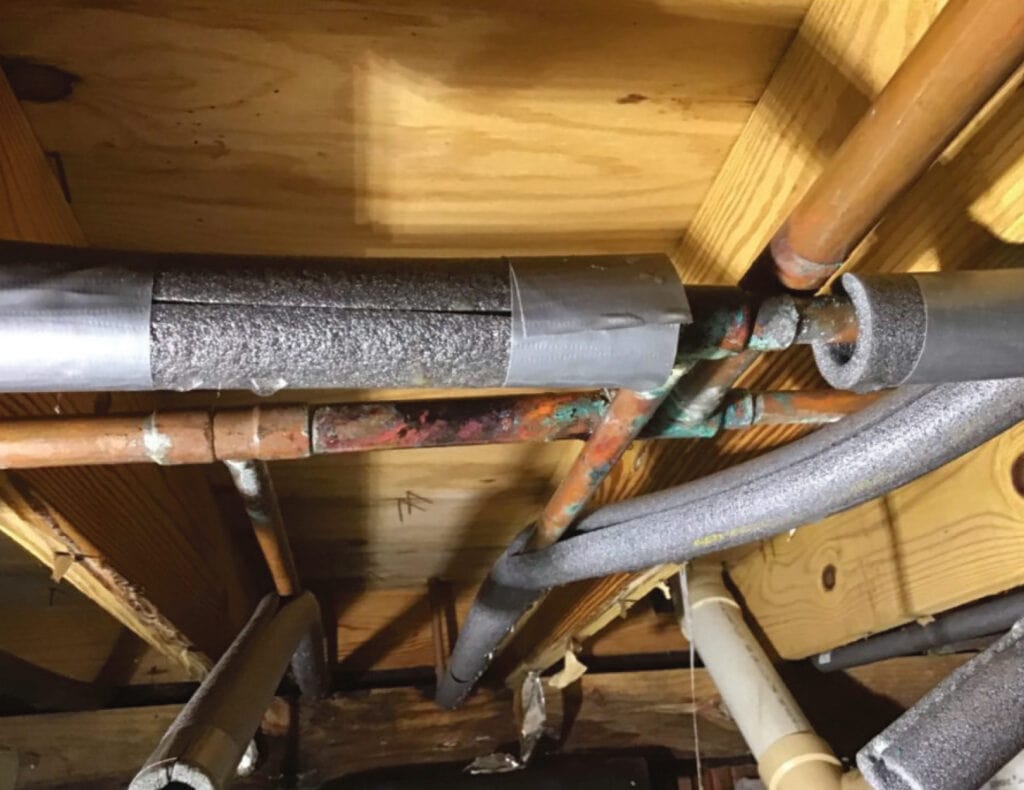Insulating Your Period Home
The latest Government research suggests that energy-efficient homes sell for around 14% more than uninsulated properties, not to mention being far more cost-effective to heat.
This can be particularly significant in period homes, which are usually colder than modern properties and may have a host of other running costs associated with them.
Approximately half of all houses built before 1929 (regardless of size) have EPC (Energy Performance Certificate) ratings of E or lower, compared with just 3% of houses built in the last 30 years.
For those worried about their home’s aesthetic: don’t be. Whilst energy generation may be showy (solar panels, wires, cables etc) energy efficiency is mostly hidden; so much so that EPC assessors often forget to even ask about it!
Quick tip: as energy efficiency measures are hidden, you will need to make sure that you retain your certificates as proof of installation.
There are a number of ways in which you can make your home more energy-efficient:
Loft Insulation
This is perhaps the most basic and is a simple matter of DIY-ing with materials bought from local suppliers. If your loft is large or a bit tricky, you can call in the professionals for a quick and easy fix.
The most popular method for loft insulation is spray foam, but insulating boards can also be used.
Wall Insulation
Owners of period homes often assume that they’re ineligible for wall insulation as houses built before 1920 will typically have solid rather than cavity walls. However, solid wall insulation is easily achievable even in older properties. (The exception is listed buildings, where you will need to contact the relevant authority to see what can and can’t be fitted.)
Solid wall insulation, which must meet building regulations and a set U-value (a figure that indicates how quickly heat passes through), reduces condensation as well as saving heat.
It’s possible to fit both external and internal solid wall insulation, but this is overkill and can look messy on the outside. However, there are two main options for fitting internal insulation without ruining your décor.
Firstly, you can use rigid prefabricated boards or attach a timber or metal studwork frame to the wall and fill this with insulation before plastering. This is the more costly option and can add as much as 10mm to your wall, effectively shrinking the room. The other option is to hang a much thinner veneer over the insulation. Although this can be a tedious process and doesn’t have the structural integrity of the previous method, it is nonetheless popular and has been praised by people in the industry.
Of course, if your property is slightly newer, then cavity wall insulation is the best option. There are three types: blown mineral fibre (strands of fibreglass or mineral wool that are forced into the cavity using compressed air), polystyrene beads or granules (either held together with resin or installed loosely), and urea formaldehyde foam (injected into the cavity where it then expands to fill the gap). Cavity wall insulation must be fitted by an expert, and your chosen company will be able to advise you on the best of these three options.
Window Insulation
Windows account for nearly 20% of the heat lost in your home, but bog-standard double glazing isn’t always an option in an older property. However, thanks to rising demand, there are now a number of companies that specialise in creating sympathetic reproductions of period-style windows, with the added bonus of double glazing.
At the very least you may want to consider replacing original glass, as this tends to be far thinner than its modern counterpart – this option tends to be approved even in listed buildings (although you should always check).
Older frames may also need replacing or renovating as they can warp. Specialist companies can replace sashes with recessed brush strips as well as replace putty, and DIY draught strips are easy to fit to timber frames.
Pipe Insulation
Pipe insulation is a foam tube wrapped around the pipes carrying hot water from your boiler to your hot water tank.
It’s a simple and effective way to reduce heat loss and stop your pipes from freezing in cold weather. By keeping your water warm for longer, you’ll use your boiler less. Pipe insulation is easy to fit, and the materials are available at all good DIY stores.
Floor Insulation
Finally, it pays to take a close look at your floors. The floor contributes, on average, 15% of heat loss from your property. Floor insulation works by creating an insulating layer between your floorboards and joists – a must for older wooden flooring.
It’s advisable to call in the experts for this, as any sign of rot or damp under the boards must be dealt with before insulation is installed.
The three main types of floor insulation are:
- insulation boards/EPS sheets – durable, crack-resistant and waterproof
- spray foam – like using spray foam in your roof, and provides excellent heat retention
- cork, wood, or cellulose – less effective but can be used as an adjunct to other materials.
Insulating an entire house is a big job, so if you need to prioritise we recommend starting with the walls, as these are responsible for 35-40% of heat loss in your home.
Posted in: Property



